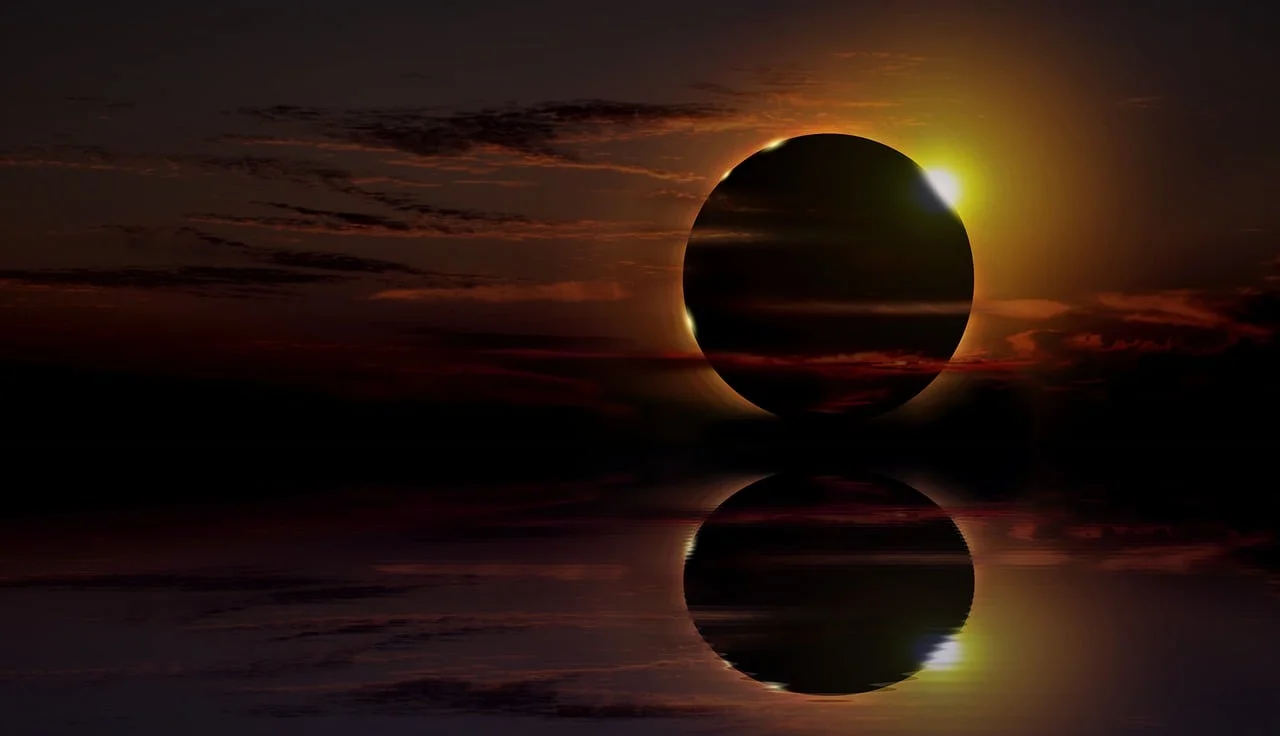In the vast and enigmatic cosmos, one of the most awe-inspiring phenomena is the celestial dance of eclipses. These cosmic events, captivating the imagination of astronomers and curious minds alike, fall into two main categories: solar eclipses and lunar eclipses. But what sets them apart? In this article, we'll delve into the fascinating world of eclipses and unravel the key to understanding their distinctions.
Solar Eclipses and Lunar Eclipses: What's the Difference?
Solar and lunar eclipses are a mesmerizing cosmic ballet involving three celestial protagonists: Earth, Moon, and Sun. In solar eclipses, the Moon comes between Earth and the Sun, casting its shadow upon our planet. Conversely, in lunar eclipses, Earth stands between the Sun and the Moon, plunging our natural satellite into an eerie penumbra.
Solar Eclipses
Solar eclipses occur when the Moon crosses the path of the Sun, partially or entirely blocking its light. There are various types of solar eclipses, including total, partial, and annular eclipses. In a total solar eclipse, the Moon completely covers the Sun's disk, revealing the Sun's outer atmosphere known as the solar corona. This breathtaking spectacle is only visible from specific areas on Earth and often leaves observers awestruck by the beauty of the cosmos.

Types of Solar Eclipses
- Total Solar Eclipse: As mentioned, in this type of eclipse, the Moon fully covers the Sun, plunging the area under the shadow into complete darkness.
- Partial Solar Eclipse: In this case, only a portion of the Moon obstructs the Sun, creating a crescent shape on the solar disk.
- Annular Solar Eclipse: During annular eclipses, the Moon doesn't fully cover the Sun, leaving a luminous ring, known as the "ring of fire," around the lunar silhouette.
Lunar Eclipses
Lunar eclipses, on the other hand, are events where Earth comes between the Sun and the Moon. Earth's atmosphere scatters solar light, allowing only red and orange hues to pass through and reach the lunar surface, resulting in the distinctive coppery hue of the Moon during a total lunar eclipse.

Types of Lunar Eclipses
- Total Lunar Eclipse: During a total lunar eclipse, the Moon enters Earth's shadow completely, taking on a reddish tint due to sunlight refracted through Earth's atmosphere.
- Partial Lunar Eclipse: In this case, only a part of the Moon enters Earth's shadow, creating a shading effect on its surface.
- Penumbral Lunar Eclipse: This is the most subtle type of lunar eclipse, where the Moon passes through Earth's penumbral shadow, resulting in a faint and hard-to-discern darkening.
FAQs about Solar and Lunar Eclipses
How often do solar and lunar eclipses occur?
Solar and lunar eclipses are not rare events, yet they also don't happen every day. On average, there are about two eclipses of each type per year. However, the visibility of these events depends on geographical location and orbital paths.
Are they safe to observe directly?
Looking at a solar eclipse without proper protection can cause serious eye damage. Never look directly at the Sun during a solar eclipse. Instead, it's recommended to use certified eclipse glasses or indirect projection methods to safely enjoy this cosmic spectacle.
Do they hold any cultural or historical significance?
Yes, eclipses have held profound cultural and historical significance in many civilizations. In some ancient cultures, solar eclipses were interpreted as divine signs or omens of future events. Even today, some groups attribute symbolic meanings to these celestial events.
Conclusion: Cosmic Wonders Within Our Grasp
In conclusion, solar and lunar eclipses are two cosmic spectacles that remind us of the astonishing interplay between Earth, Moon, and Sun. While they are natural phenomena, they never fail to amaze us with their beauty and mystery. Whether marveling at the solar corona during a total solar eclipse or contemplating the reddish tint of the Moon during a total lunar eclipse, these events connect us to the vast cosmos surrounding us. So, the next time you come across news of an eclipse, don't miss the chance to witness one of the most impressive wonders of the universe!
Reference: NASA Eclipse
Deja una respuesta


IMPRESCINDIBLES DE LA SEMANA